Free website spells to engorge your traffic + turn your brand into gold
categorie(s)
Hola chica, I'm Ami.
welcome to the blog
Ami is a creative copywriter and the proud owner of Ami Writes. She’s been casting wordy spells for over 7 years and transforming businesses into brands is her speciality. Ami’s high-key obsessed with Harry Potter and Disney - something that has seeped its way into her own brand.
Ah, email nurture sequences.
Unless you’ve been living under a rock, you’ve probably heard the big ol’ stats circulating the business world that proves email is the number 1 place to make sales.
Not feeling it? How about the fact that email has been proven to provide a huge ROI ($36 for every $1 spent)?
So, brands new to email marketing might be feeling the dreaded FOMO because this isn’t happening for them.
That sucks.
Because email marketing only works if you know what you’re doing.
You don’t just subscribe to MailChimp and suddenly have sales flooding in.
We’re starting with the basics. Because you need to set up an email nurture sequence before you can hope to make sales through email.
So, today we’re covering everything about email nurture sequences.
PS: Coming here from Clubhouse? We’ve been chatting about email nurture sequences in the Women in Business UK club. Missed the room and want some nurture sequence training? You can listen to the replay.
What is a nurture sequence in email marketing?
A nurture sequence plays a key role in email marketing.
Essentially, a nurture sequence is an (often automated) email sequence that is triggered when someone subscribes to your list.
The aim of a nurture sequence is to nurture and warm your new subscribers throughout the series of emails, so that – when you send promotional emails – you’ll have already built a relationship with your readers.
If you’re investing your time, effort, or money into email marketing (like 64% of small businesses), a nurture sequence is the building block that lays your foundations.
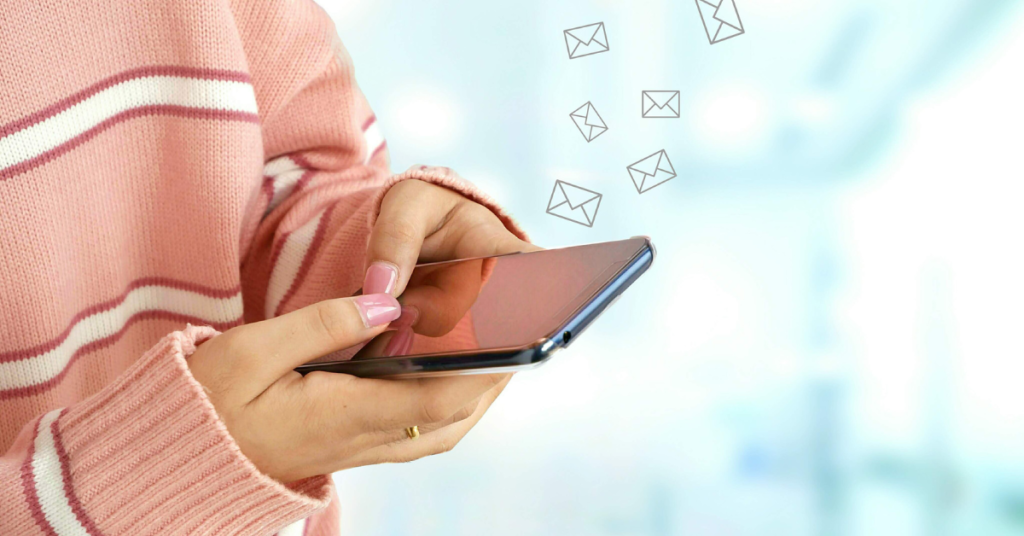
What you need to build an email nurture sequence
Before we jump into the technicalities of an email nurture sequence, there are a few things you need first.
- An email marketing platform You can’t leverage the benefits of email marketing without an email marketing platform. Personally, I use MailChimp. If MailChimp isn’t your jam, take a look at FloDesk or ActiveCampaign.
- A lead magnet If you want to build your email list, you’ll need a lead magnet. More on that later.
- Automation features Okay, so this one kinda ties in with the first one. You’ll need an email marketing platform that has automation tools. Nurture sequences – once they’ve been set up – don’t need to be changed. That is, of course, until you’re offering a new lead magnet or adjusting your services.
The last thing you’ll need?
A copywriter.
Or at least a willingness to learn how to write a nurture sequence.
Benefits of a nurture sequence
But what’s all the fuss about?
Why do you need a nurture sequence?
A well-written nurture sequence:
✅ Builds a bond between the subscriber and the brand owner
✅ Develops trust between the subscriber and brand owner
✅ Sets expectations from the beginning
✅ Allows space to build excitement and exclusivity
✅ Starts interactions with your brand off on the best footing
✅ Makes selling much easier, because your automated nurture sequence has done a load of the work for you
✅ Warms your leads and keeps them toasty
✅ Allows you to ask for feedback about your lead magnet (and prove that you actively listen to your subscribers)
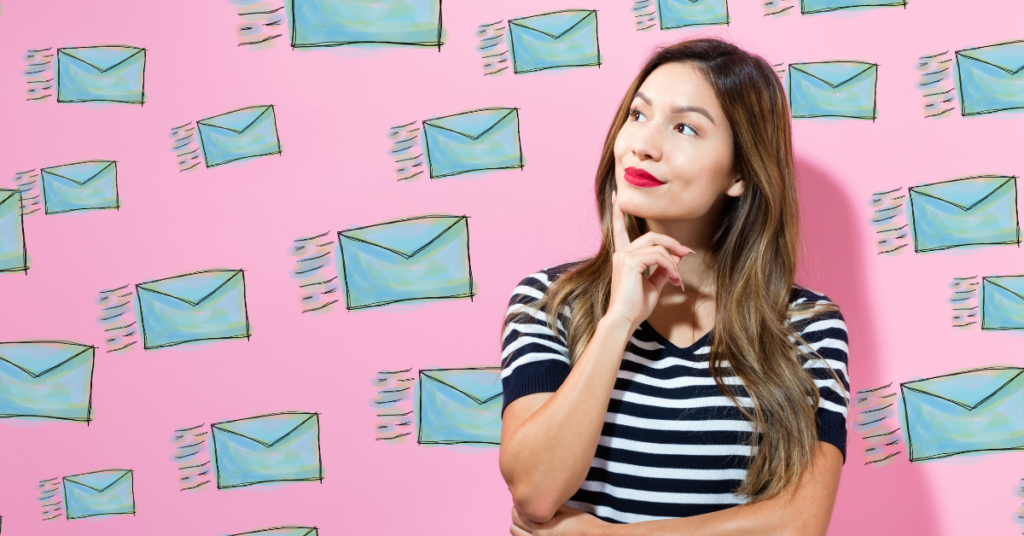
Stage 1: Leads
In email marketing, a person becomes a lead when they decide to opt into your emails. In other words, they become a subscriber.
They’re at the beginning stage of their journey with you. They’re not thinking about buying something or investing in something. Right now, they’re just looking for a solution to a problem.
That’s why a lead magnet is so important.
You entice or persuade people to join your email list by presenting a solution to a problem (for free). This shouldn’t solve the entire problem that your service solves, or you’d never make any sales.
Your lead magnet should dive into a single problem within the field of your brand.
Let’s take a copywriting service as an example.
In the world of copywriting, there are a whole bunch of pain points experienced by business owners.
Some may include:
- My words are boring
- I don’t know why my words aren’t working
- It’s taking me hours to write anything
- My website isn’t getting any traffic
And so on.
So, my lead magnet needs to tackle an area of their pain point. I could, for example, create a word bank that spices up offers. Or I could share a step-by-step technique to cure writer’s block for non-writers. Or, I could create a website copy spell book with wordy spells to enhance website copy (which I’ve done BTW – take a look here).
I haven’t told my readers how to write copywriting that converts across all platforms and divulged my process because that makes me completely redundant. Plus, it’s way too overwhelming and it’d be cast aside in seconds.
My lead magnet tackles a specific problem, is actionable, and is desired by my ideal clients.
For someone to become a lead, they need to opt into your email list. Once you’ve got their email address, they’re officially a lead.

WHAT ABOUT NEWSLETTERS? DO THEY WORK?
There’s a little controversy around this.
In my findings (and many others), newsletters alone don’t entice people enough to hand over their email addresses.
Unless you’re a huge brand (I’m talking Coca-Cola or Lego) with die-hard fans that can’t wait for updates, people aren’t all that fussed about “what’s new” in your business.
There’s nothing stopping you from sending newsletters. But you’ll find that your opt-in numbers will be considerably low if you just promise to share “the latest updates”.

Stage 2: Prospects
After someone has become a lead, the next stage is the development from lead to prospect.
At this point, the email subscriber is problem-aware and they’re looking for a way to solve said problem.
Prospect is the middle ground between a lead and a client. They’re potential clients. It could go either way.
So, at this stage, they’re looking into your offer and considering making a purchase. They’re probably comparing prices, benefits, and overall brand/offer compatibility.
Think of it as the “dating” phase. Prospects are considering flirting with your brand and deciding if it should be something more serious.
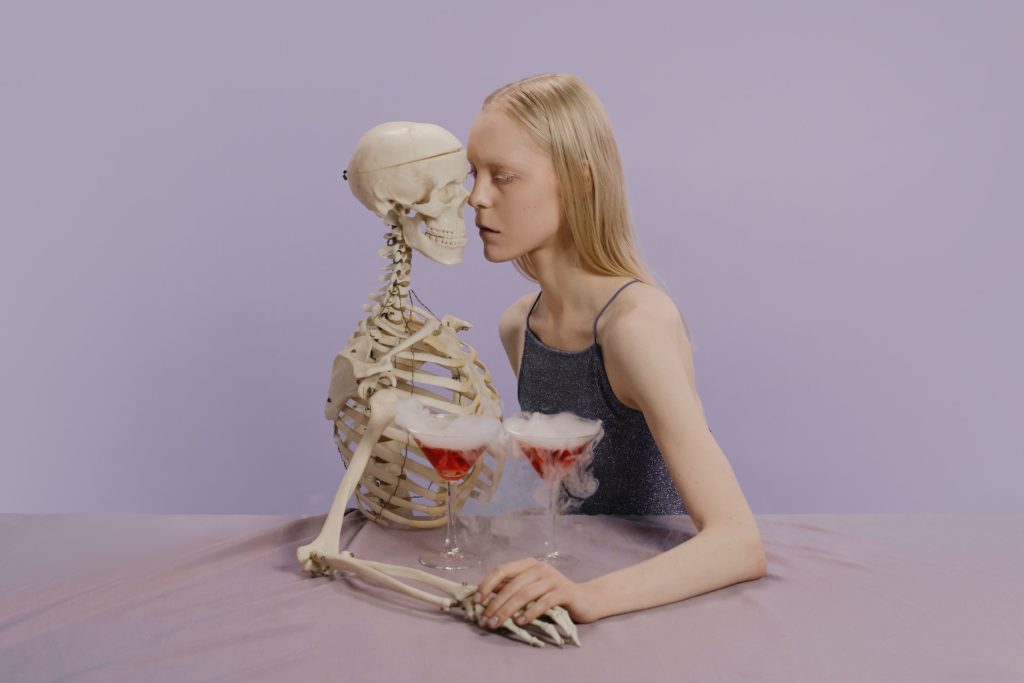
Stage 3: Clients/Buyers
Yay! If a lead jumps up a level to become a prospect and decides to make a purchase or investment, then BAM: you’ve got yourself a stage 3 client (or buyer).
In real terms, this means they’ve made the choice to spend their money on your offer. Whether that’s as a business investment (for example, a brand-owner deciding to invest in copywriting) or a personal spend (for example, buying a product like a pair of sunglasses), the once-lead has made the decision to trust you and make a purchase.
Don’t make the mistake of thinking that this is the end of the journey, though.
Sure, there are 3 stages. But that third stage isn’t all “curtain up, roll credits, happily ever after”.
Your clients are what make your business run. They’re the ones who will tell others about you – refer your offer to friends, family, or colleagues. And, let’s not forget, clients who have worked with you before and had a good experience are far more likely to become repeat clients.
And when you work alongside someone or continue to provide that someone with products they love, they transform from “client” into “repeat client” and then into “raving fan”.

Which stage is the most important stage in email marketing?
From leads to clients (with prospects in between), there isn’t one stage that is more important than the other.
All three stages need an equal amount of emphasis and attention. That’s why your nurture sequence is so important because it walks them through each stage and guides them into the next sequence of their time with you.
So many people will quit making an effort when a prospect becomes a client. They feel there’s no need to actively sell to them or continue building relationships because they’ve already parted with their money. This is a huge mistake. Don’t forget about them. They’re just as important as leads and prospects.
How many emails should be in a nurture sequence?
Most email nurture sequences consist of between 5-10 emails that are sent 2(ish) days apart.
To be honest, it will depend on your business, target audience, and goal. However, any less than 4 will make it incredibly difficult to implement a strategy and – ultimately – convert leads to prospects.

What does an email nurture sequence look like?
An email nurture sequence will look different for every brand. But, as a rule of thumb, a nurture sequence will be a series of emails that are triggered and automatically sent over a set time period.
How to write an email nurture sequence
An email nurture sequence needs to tie into your sales strategy, marketing strategy, and content strategy.
Everything should be singing from the same hymn sheet.
Step 1: Determine why you’re doing this
And no, “because I should” is not an acceptable answer.
You have to know the entire point of building your email list.
Is it to launch a new product? To get feedback on your service or product?
The reason you need to know why you’re building an email list is because it will massively influence the way you write your nurture sequence.
So, before you get going, think carefully about the point of your email list.

Step 2: Decide on your end “offer”
A good nurture sequence gets your subscribers one step closer to making a purchase.
So, you should end your nurture sequence either hinting at an offer or positioning a low-cost (or even free) offer.
These should be evergreen (ie: an offer that doesn’t need to be changed over time). So, a live webinar, for example, wouldn’t work.
A pre-recorded webinar, however, would work.
Perhaps the free offer could be attending a call. Or maybe a low-cost collection of templates, or ebooks.
If you choose to position a paid offer, please make sure it’s low-cost. Your leads have only just become a part of your subscriber-family.
You need to take things slowly and respect that they may not be at the prospect phase yet.
Once you’ve decided on your end offer, you can move on to step 3.
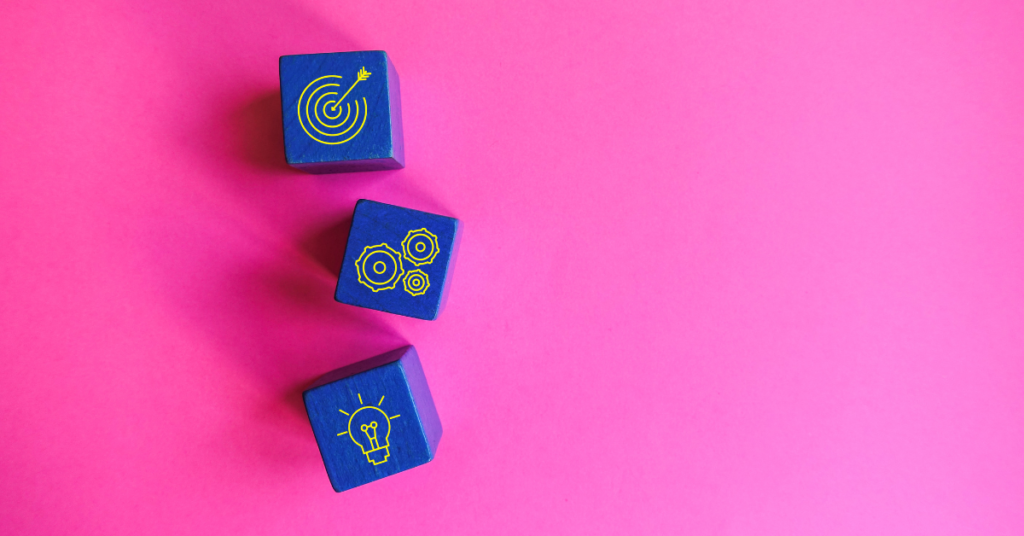
Step 3: Map out your nurture sequence
Note: you have not started writing yet. That’s good. If you started writing at this point, it’d be confused and lack direction. Stick with me and trust that it’ll be far more concentrated when you move onto the next step.
You can map out your nurture sequence with a pen and paper. It doesn’t need to be anything fancy.
Take a look at a nurture sequence I mapped out for a client:
(Thank you Natalie Trusdale for allowing me to post this!)
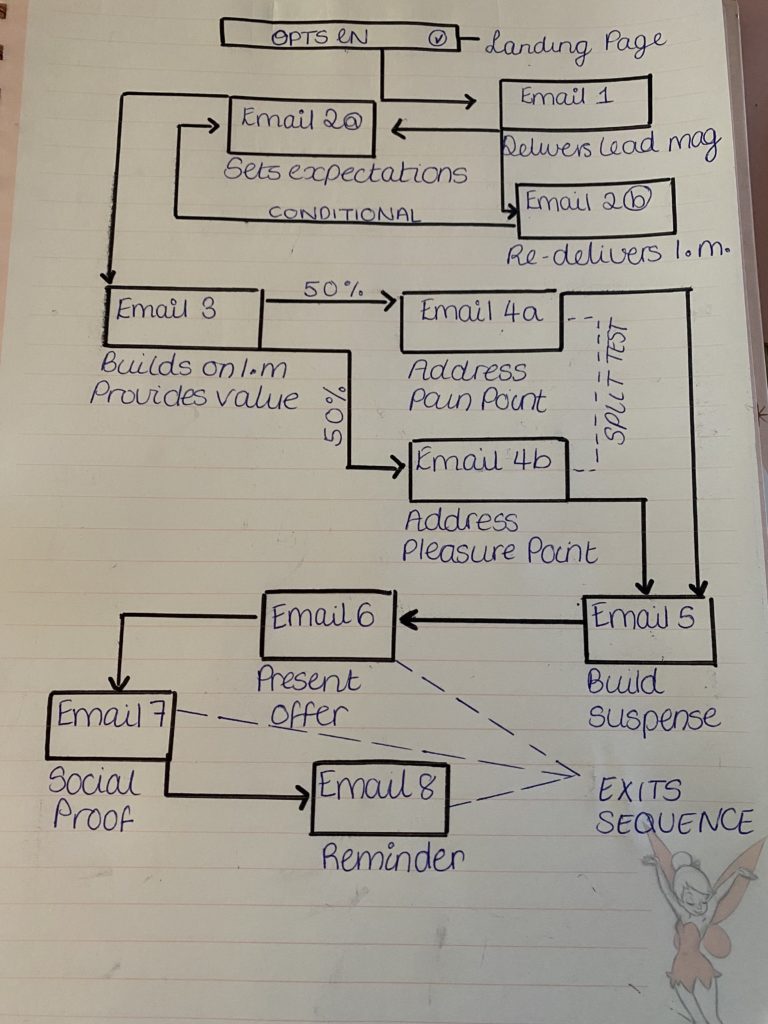
Mapping out your nurture sequence like this helps give you structure and reminds you what the end goal is.
Step 4: Zoom in on specific goals
As with anything in business that you produce – from your content to your copy – everything needs a goal.
In copywriting, this extends to every single word you write.
You should be able to explain what the point is of that individual word.
Once you’ve mapped out your nurture sequence like the photo above, you should zoom in and determine what the end goal is of each individual email. There should be zero emails that are sent without a purpose. Deciding on a goal for each of your emails may include actions like:
- Follow me on social media
- Reply and let me know
- Do this survey
- Take a look at my website
- Take a look at my blog
- See what my clients/customers have said
and so on.

EXAMPLE OF THE FIRST EMAIL IN A NURTURE SEQUENCE
It can be tricky to envision what it looks like for every individual email to have a goal.
So, I have an example for you.
Anyone who has kept an eye on my Instagram will know that I’m heading to Florida in September 2022 to go to Disney World and Universal (to see Hogwarts).
When buying my tickets, I downloaded the Universal Orlando Resort mobile app and created an account.
As soon as I entered my email address, that triggered their nurture sequence.
The first email Universal sent me looks like this:
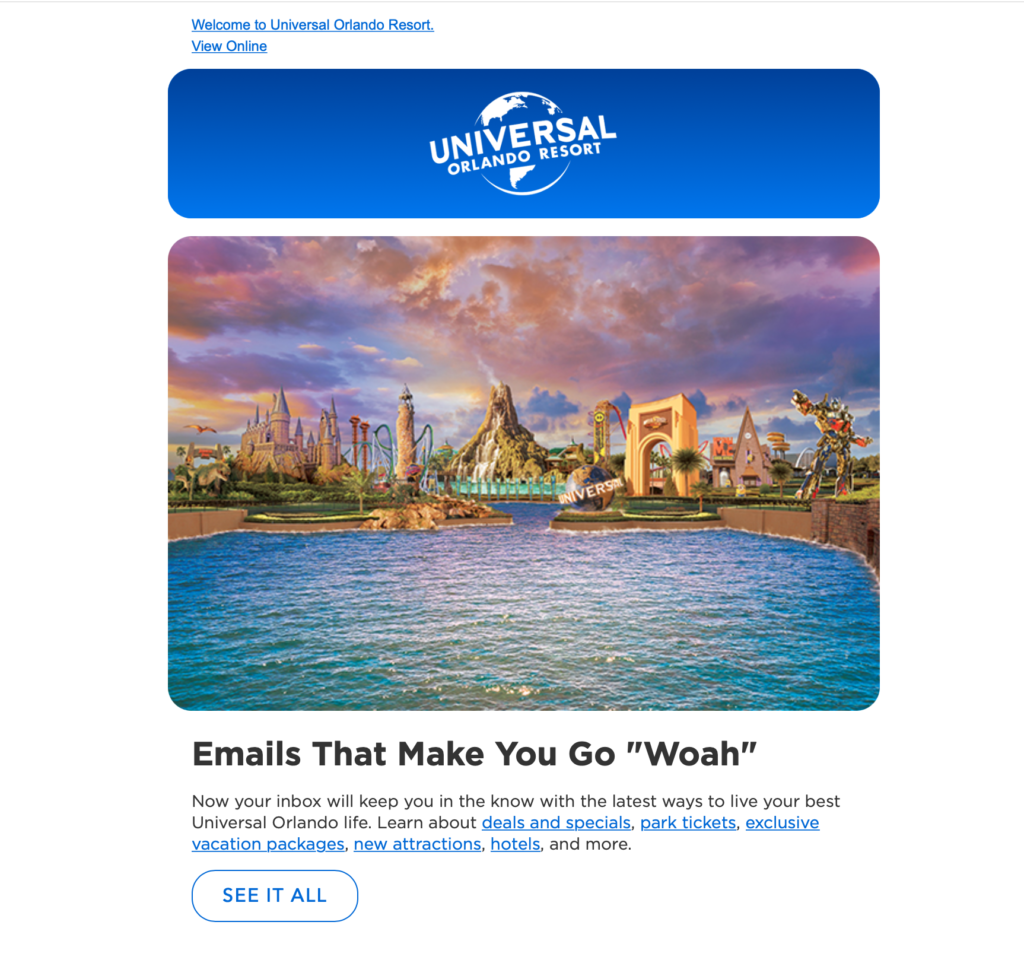
The aim of the first email is to introduce the subscriber to the email address, set the tone, and set expectations now that the subscriber is part of the email list.
We’ve got the standard “welcome” message at the top, the logo, an image to provoke excitement and outline the brand, and a heading that speaks volumes about the offers.
“Emails that make you go ‘Woah’” is a particularly clever heading, because it mirrors the noise we’ll be making on the rollercoasters. Plus, it promises us that their emails will have the same result.
We’ve then got a short paragraph that tells us what we can expect now that we’re on the list. These are hyperlinked and then have a button, so we know that the clear aim of this is to make us hit that button.
So, the end goal of this email? To “see it all”. To learn about deals and specials, park tickets, vacation packages, new attractions, hotels, and more.
For us, this is a bit of a broad goal. For Universal, though, it works. Because if someone has signed up to the email list with the app, it’s pretty clear that they’re interested in going to the theme park.
Now, if I had already bought the tickets, I wouldn’t be sent that same welcome email. But because I’ve yet to buy them (it’s on my to-do list, I swear), this is the email that was triggered.
Step 5: Draft your nurture sequence
Yes! You’re finally at the stage where you can start writing your email nurture sequence.
At this point, you know your end goal and the individual goals for each of your emails.
Now, you start writing.
For some, it makes sense to write your emails chronologically, starting with email 1 and ending with your last email.
For others, they find it easier to work backward, starting with the last email and finishing with the first.
In reality, it’s up to you how you do this. So long as you have an email nurture sequence that is written with purpose at the end of it, there’s no right or wrong order to the writing process.

EMAIL NURTURE SEQUENCE WRITING: TOP TIP
If you go away with anything from this blog, make it this:
Your email nurture sequence should provoke a feeling. Make them feel.
If you tug at heartstrings – be that through addressing their pain points or pleasure points – your email is likely to be remembered and pondered over.

Step 6: Edit
Once you’ve written the first draft, you’ll need to edit it.
Avoid making standard copywriting mistakes and triple-check your spelling, punctuation, and grammar.
Once you’re happy with it, move on to step 7.

Step 7: Set up your email nurture sequence
Depending on your email marketing platform, there will be different ways of doing this. For the vast majority of platforms, though, it’s fairly easy to set up your emails.
Try to make sure your emails are branded with your font, colours, and logo, and maintain a consistent tone of voice throughout.
You’ll need to set a trigger, a time delay, a subject line, and a snippet (also known as “preview text”).
WHAT IS A TRIGGER IN EMAIL MARKETING?
A trigger is what causes the email to be sent. For a nurture sequence, your first trigger is almost always “a user joins the list”.
![Woman squinting in animated image (GIF) with the caption [TRIGGERED]](https://media.giphy.com/media/U5V2m54zOwDJZBSSHk/giphy.gif)
WHAT IS A TIME DELAY IN EMAIL MARKETING?
A time delay is an amount of time between the trigger happening and the email being sent.
For example, your trigger could be “a subscriber joins the list” and your time delay could be “5 minutes”.
This means that, once someone has opted-in to your email list, the email will be sent 5 minutes later.
You can set time delays as minutes, hours, or days.

WHAT IS A SUBJECT LINE IN EMAIL MARKETING?
A subject line is the absolute Queen of your email. It’s the doorway between sitting in an inbox and being opened.
The subject line sits underneath the “from” line and should grab the reader’s attention immediately.
It’s the perfect place for a super-short hook.

WHAT IS PREVIEW TEXT IN EMAIL MARKETING?
Preview text – otherwise known as a “snippet” – is a brief summary of the email. You’ll see it underneath the subject line.
Take a look here:
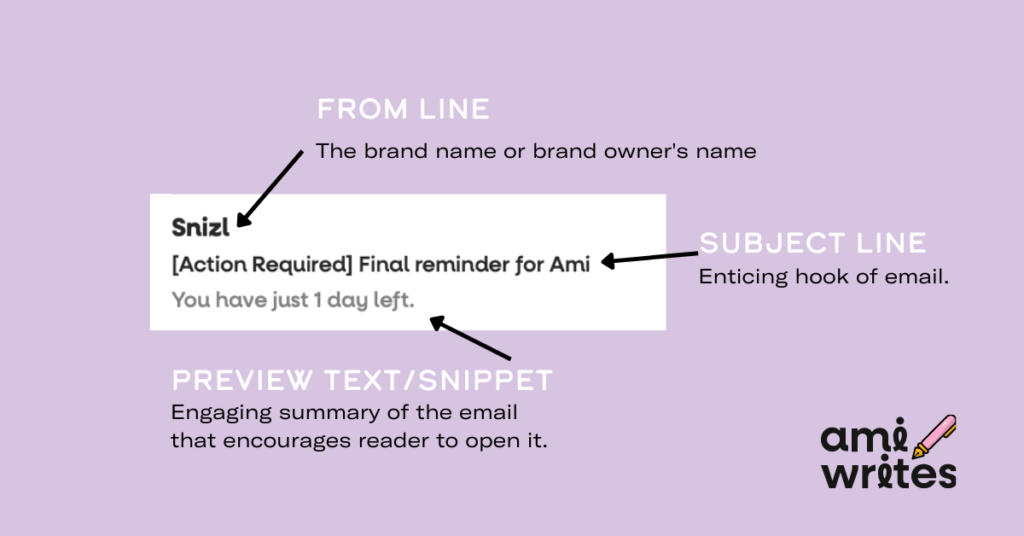
Step 8: Test your email nurture sequence
Before you go “live”, make sure you test your nurture sequence. You need to make sure that the triggers are all working.
So, make sure you test it properly and everything’s working.

Step 9: Switch it on!
Now that you’re happy with your nurture sequence, it’s branded, and you’re ready to go, it’s time to do just that. Go!
Turn on your nurture sequence and start promoting your lead magnet.
But it doesn’t end there.
One more step, I promise.

Step 10: Monitor your results
Email marketing analytics give you so much insight.
It’s so important that you keep track of how your nurture sequence is performing.
Here are the metrics you’ll need to keep an eye on:
| Metric | What It Shows | Average |
|---|---|---|
| Open Rate | The percentage of your subscribers who have opened your email. | 21.33% |
| Clickthrough Rate | The percentage of subscribers that clicked on one or more links/buttons in your email. | 2.69% |
| Bounce Rate | The percentage of emails that couldn’t be delivered successfully to your subscriber’s inbox. | 0.7% |
| Unsubscribe Rate | The percentage of subscribers that have chosen to leave your email list. | 0.1% |
| List Growth Rate | The percentage that shows how your list is growing | 5.2% per month |
Email nurture sequence ideas
Struggling to come up with what to write in your emails?
Remember, everything should tie back to that end offer. But if you’re finding this tricky, here are some potential ideas:
- Explain what they can expect to see from you now they’re a subscriber
- Tell your story and focus on the transformation
- Share testimonials and case studies that prove your claims
- Send an FAQ email that addresses questions you get asked all the time
- Share a top-tip or industry secret

What is conditional formatting in email marketing?
Don’t panic. Please. Please, don’t panic.
Conditional formatting sounds a lot trickier to understand than it actually is.
Conditional formatting in email marketing is when you set up an email that should be sent if it meets a certain criteria.
For example, say I’ve delivered my lead magnet in email 1. For email 2, I could set up 2 different emails.
2a. An email that asks for feedback on the lead magnet
2b. An email that reminds the reader to open the lead magnet
Now, imagine you received my lead magnet, opened it, and read it.
You wouldn’t want to read an email that reminds you to read that lead magnet, because you’ve already been through it.
So, you’d use conditional formatting to make sure that people who have opened the attachment don’t receive email 2b.
Should you use conditional formatting in an email nurture sequence?
Conditional formatting is a great tool offered by many email marketing platforms. So, make use of it.
In your email nurture sequence, conditional formatting might be helpful to match your reader’s email behaviour.
So, for example, if a reader interacted with your email that asked them to fill in a survey, you could send them a bespoke thank you email. However, people who didn’t fill in said survey wouldn’t need a thank you email.
The more personalised you can make your nurture sequence, the better.
You want your reader to feel like a valued reader rather than a number on a subscriber list.
So, yes. Conditional formatting is a great tool to use in an email nurture sequence.

Is an email nurture sequence worth it?
Sounds like a whole lot of work, doesn’t it?
It’s because – in reality – it is.
A nurture sequence can be extraordinarily beneficial. In fact, if you’re trying to build your email list, it really is a must-have.
So, yes. An email nurture sequence is worth its weight in gold. But only when it’s written and formatted properly.
So, go forward and learn how to write a nurture sequence.
Failing that, you always have the option of reaching out to a copywriter (-cough- hi!).
Related
about the blogger
Ami is a creative copywriter and the proud owner of Ami Writes. She’s been casting wordy spells for over 7 years and transforming businesses into brands is her speciality. Ami’s high-key obsessed with Harry Potter and Disney - something that has seeped its way into her own brand.
Hola chica, I'm Ami.
© 2024 Ami Writes - All Rights Reserved
Site Created By Dear Charlie | Branding Studio
terms & conditions
contact
grab the spell book
services
privacy policy
blog
Portfolio
home
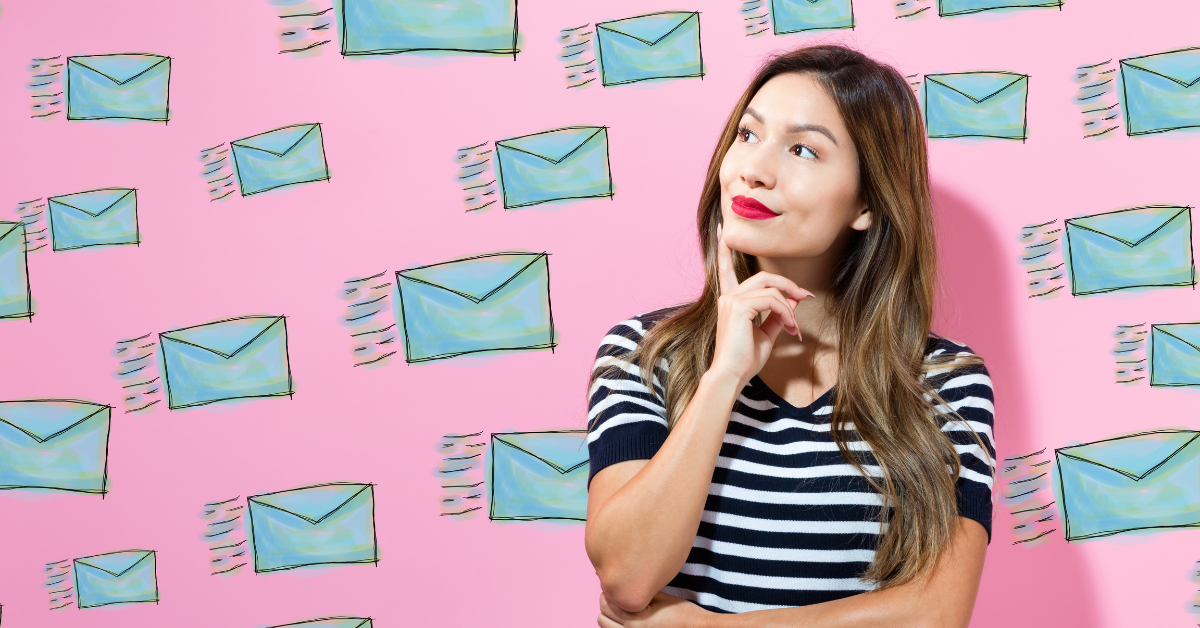
[…] Because the lead magnet is free. And the lead magnet sparks the nurture sequence. Also […]
[…] Your guide to creating an email nurture sequence […]
[…] create an epic nurture sequence […]